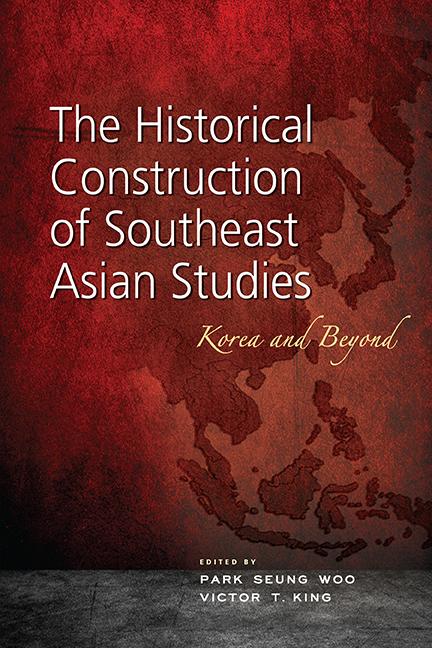Book contents
- Frontmatter
- Contents
- List of Tables
- List of Figures
- Foreword
- Acknowledgements
- About the Contributors
- 1 Introduction: The Historical Construction of Southeast Asian Studies and the Emergence of a Region
- PART I NORTHEAST ASIA
- 2 Southeast Asian Studies in China: Progress and Problems
- 3 Studies of Southeast Asian History in Contemporary Japan: The 1990s and 2000s
- 4 The Historical Construction of Southeast Asian Studies in Korea
- PART II SOUTHEAST ASIA
- PART III EUROPE
- PART IV AUSTRALIA AND THE U.S.
- Index
2 - Southeast Asian Studies in China: Progress and Problems
from PART I - NORTHEAST ASIA
Published online by Cambridge University Press: 21 October 2015
- Frontmatter
- Contents
- List of Tables
- List of Figures
- Foreword
- Acknowledgements
- About the Contributors
- 1 Introduction: The Historical Construction of Southeast Asian Studies and the Emergence of a Region
- PART I NORTHEAST ASIA
- 2 Southeast Asian Studies in China: Progress and Problems
- 3 Studies of Southeast Asian History in Contemporary Japan: The 1990s and 2000s
- 4 The Historical Construction of Southeast Asian Studies in Korea
- PART II SOUTHEAST ASIA
- PART III EUROPE
- PART IV AUSTRALIA AND THE U.S.
- Index
Summary
INTRODUCTION
The progress of Southeast Asian Studies in China, a country with about twenty countries as its close neighbours, reflects its strategic needs which are common to all adjacent regions. In the three decades after the Communist revolution of 1949, area studies could not develop into an autonomous academic field beyond fragmented research on individual countries, owing to institutional dislocation and the lack of interest and demand of the government. In the three decades after the Reform and Opening of 1978, however, area studies recorded a marked growth, as government demand increased in step with the acceleration of China's globalization and the institutionalization of foreign policy-making. Thus, the development of Southeast Asian Studies in China should be understood in the context of its national strategies toward all neighbouring regions (Tang and Zhang 2004; Tang, Zhang, and Cao 2005).
In the meantime the progress of Southeast Asian Studies in China reflects the particular importance of the region. For China, Southeast Asia is a region not just with rich economic resources but with spatial, temporal, and human conditions most ideal for area studies (He 2003, p. 107; Yu 2005; Liang Z. 2007, p. 16). There exist very close geographic connections between China and Southeast Asia. Historically, they formed intimate “lips-to-teeth” relations. As a result, they share special “blood connections” through overseas Chinese communities and cross-border ethnic groups (Liang Z. 2007, p. 16). In this context, and given the very close relations between East Asia and Southeast Asia, Southeast Asian Studies in China has been especially preoccupied with the importance of Southeast Asia in understanding the past, present, and future of China within East Asia. As Wang Hui (2009) has indicated,
There exist cultural differences between all countries. China is a Southeast Asian country as well as a Northeast Asian country. China serves as a link between many regions in Asia. China is close to many civilisations in the Asia-Pacific region and serves as a link between them. The world order excessively dominated by the United States should be changed. The future international order will be a relatively more pluralized order based on several regional associations.
- Type
- Chapter
- Information
- The Historical Construction of Southeast Asian StudiesKorea and Beyond, pp. 45 - 72Publisher: ISEAS–Yusof Ishak InstitutePrint publication year: 2013



